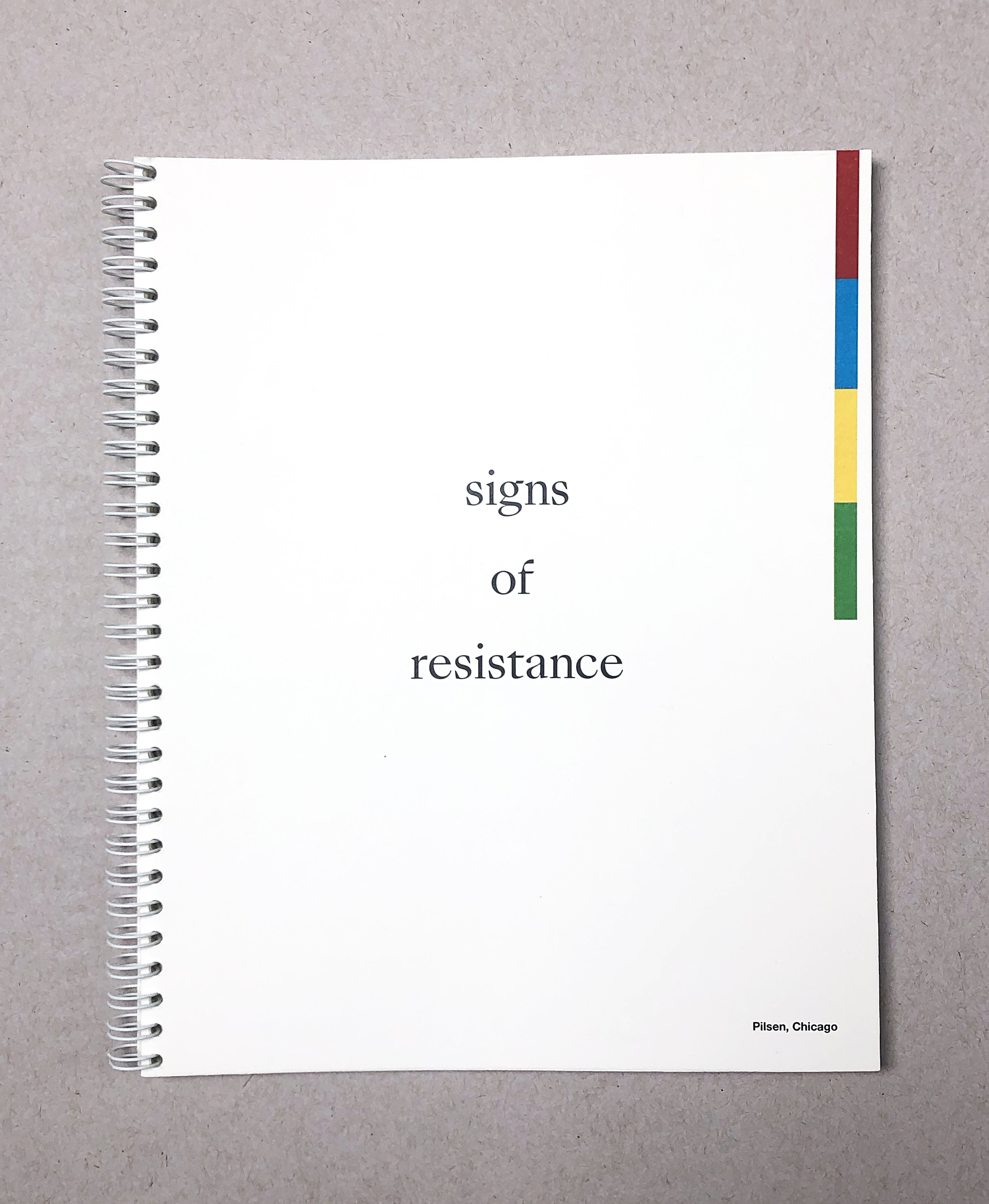
“Signs of Resistance” 2019.
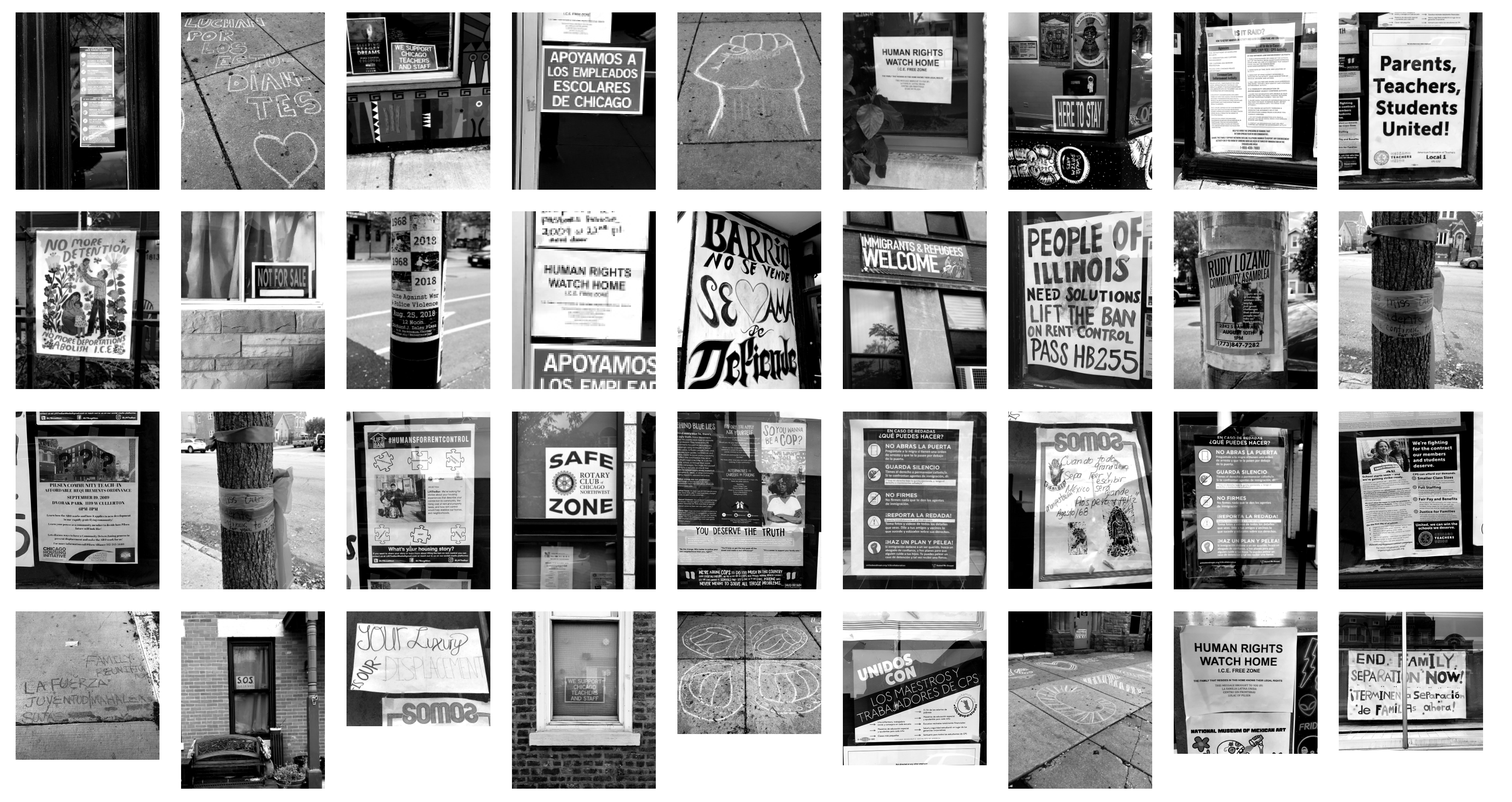


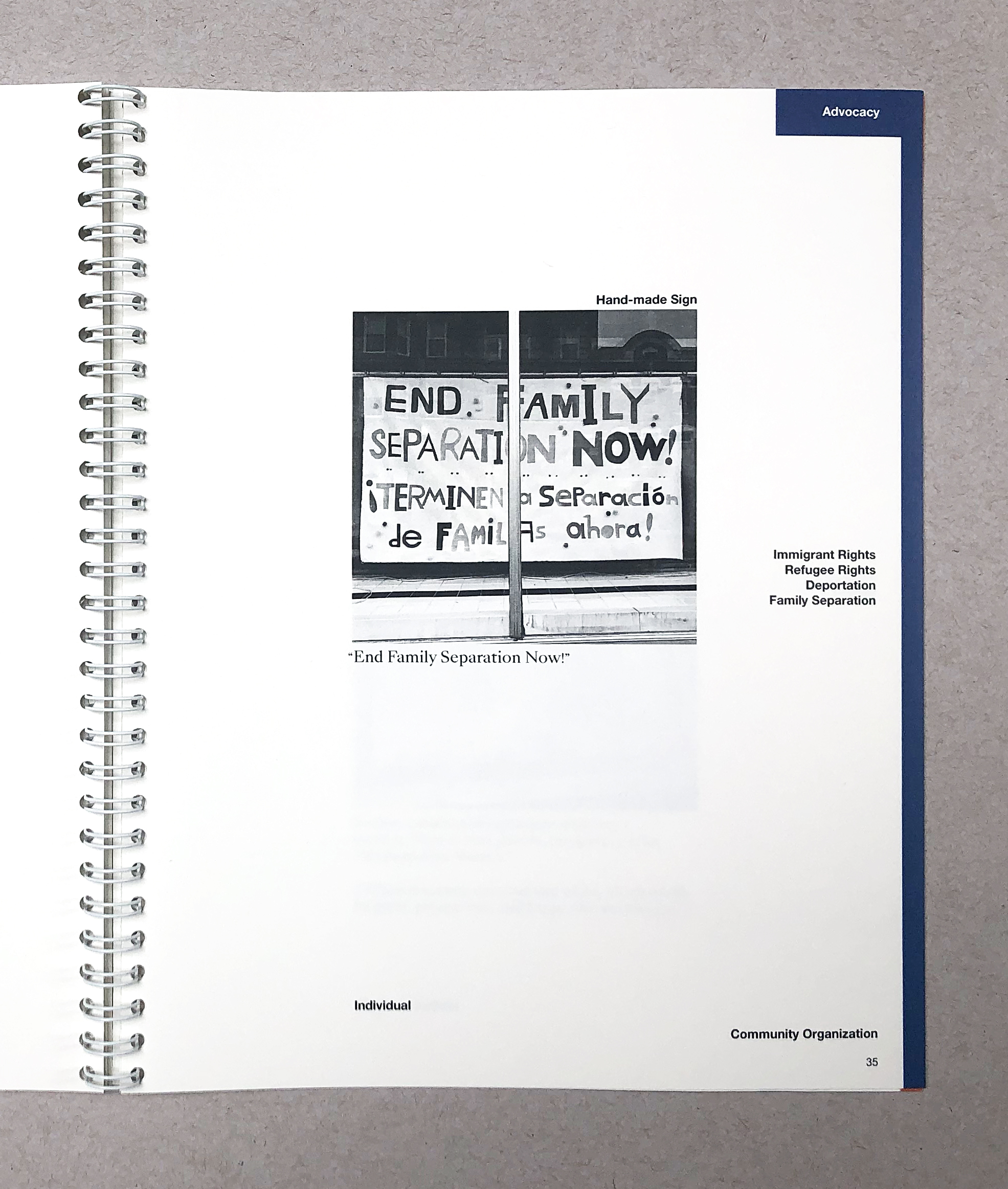
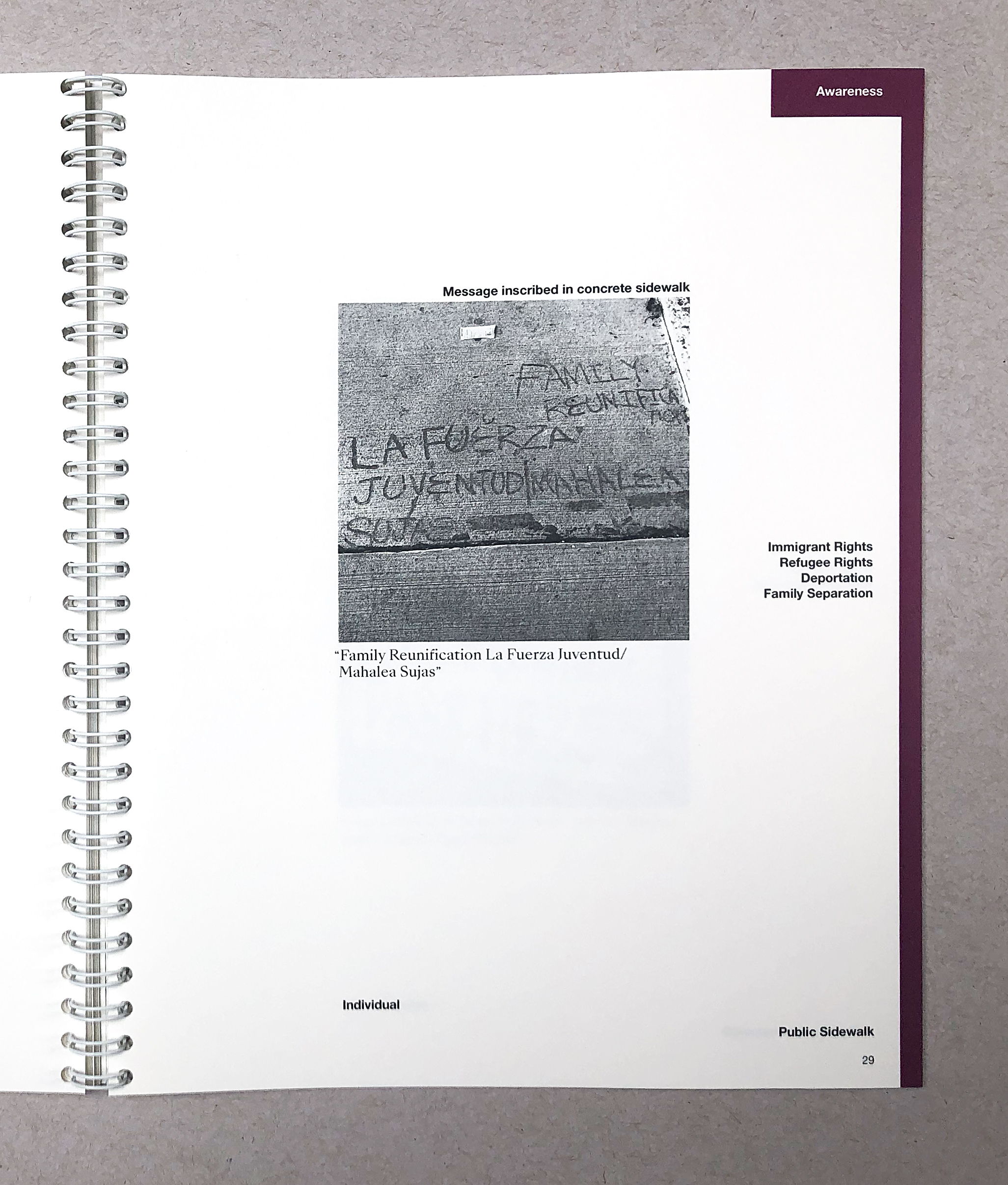
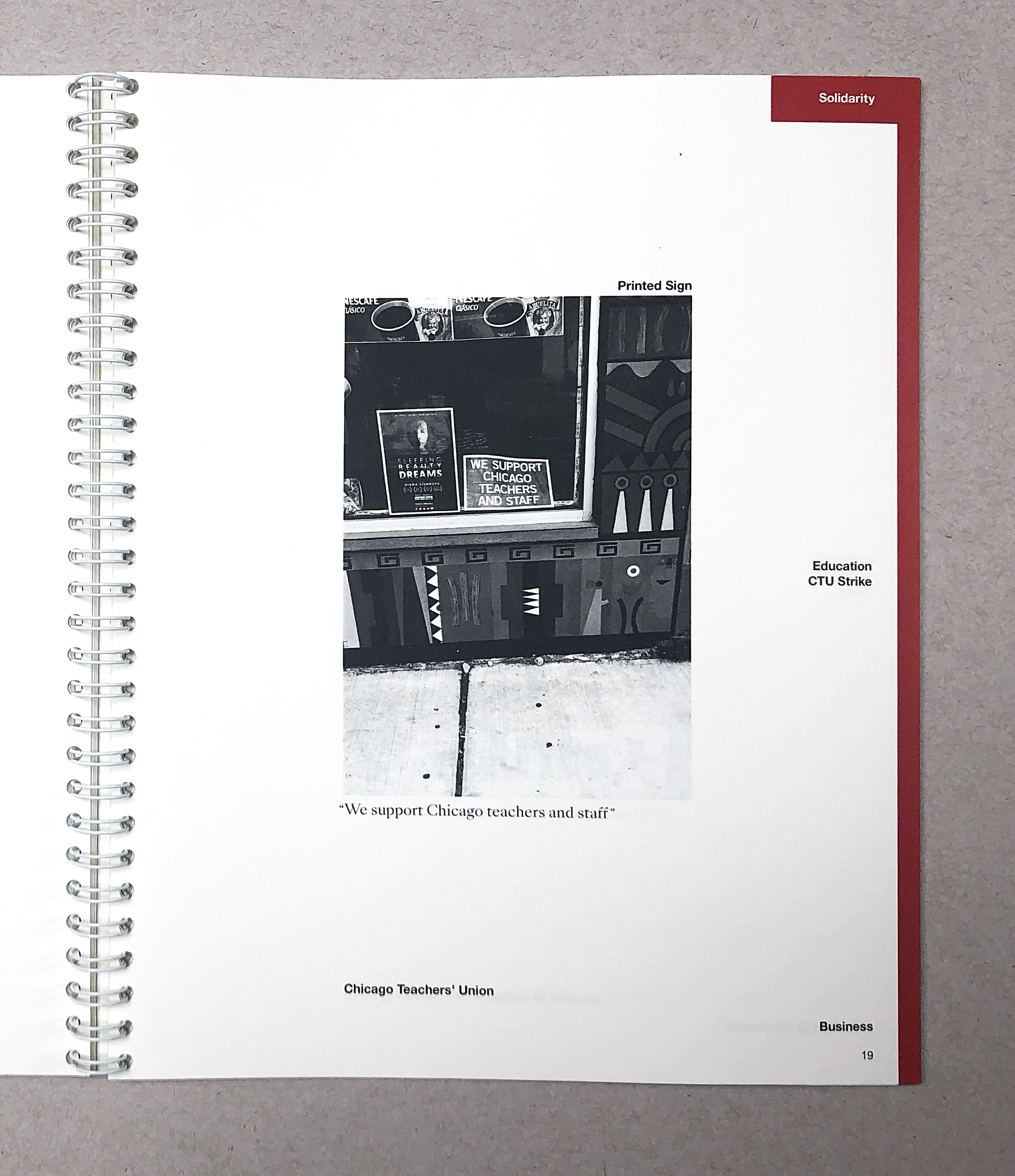

Signs of Resistance
Residents of Pilsen are aware of threats such as deportations, family separations, and hostilities toward immigrants and refugees, and also changing demographics, loss of affordable housing, and gentrification. Pilsen has a long history of community activism, labor organizing, youth-led movements, and other forms of resistance. There is much evidence of community response to these tensions, of individuals and groups connecting their messaging to a larger public.
My project initiated from an interest in documenting homemade signs, which I noticed broadcasting into public space from the windows of private homes. Among the first I noticed was a yellow flyer which says “Human Rights Watch Home. I.C.E. Free Zone. The family that resides in this home knows their legal rights.” I was interested in the way this simple flyer indicated a safe space to other community members, and the way it repeated in windows of my neighborhood served as evidence of an organized community response. Going forward, I compiled an archive of visual material–observed and gathered from the windows, streets, and public spaces of Pilsen–which collectively reveals a culture of resistance on a neighborhood-level, the structural underpinnings of activist networks and activity, and the Mexican-American identity and history of the community.
The signage may be found in varied types of locations and contexts: the windows of private residences or community organizations, inscribed on a sidewalk, posted within a public space, displayed by a business, a church, an art gallery, and so on. My initial interests evolved to encompass many different examples, showing interconnectedness, organization, or personal expression. This collection shows a broad range of messaging that is considered urgent and important enough to display in public view.
After collecting these examples, I compiled them into a catalog. I examined each sign in terms of its’ message, function, medium, content, context, and whether it came from a specific group. There is a key in the beginning which breaks down this information into where it appears on the layout of each page. I considered the different ways the material functioned, and organized it into categories which are color-coded: material which shared knowledge, indicated solidarity, indicated a safe space, spread awareness, advocacy, expressed resistance, or served as a call-to-action. Finally, at the end of the book there is an index of all the active groups from which the material originated, along with a description of the work they do, and an index of topics that appeared.
My hope is that this material can be a resource about activist and organizing networks in Pilsen, as well as a documentation of the issues that matter most to the neighborhood today, specifically the tense conditions which threaten the immigrant community, the lack of affordable housing, and the strike of the Chicago Teacher’s Union this fall. Finally, since all neighborhoods have active networks, I imagine this system of analysis being applicable to other communities, where a person might be able to reveal these infrastructures by engaging with material displayed in public space, and ultimately learning about the underlying organization. As a relative newcomer my community, I envision this cataloging project aligning with the concept of being an ally: paying attention and listening to those who already live there, and recognizing and acknowledging their organizing labor.